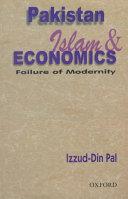
Islam and Literalism: Literal Meaning and Interpretation in Islamic Legal Theory
Literal Meaning and Interpretation in Islamic Legal Theory
In this reading of Islamic legal hermeneutics, Robert Gleave explores various competing notions of literal meaning, linked to both theological doctrine and historical developments, together with insights from modern semantic and pragmatic philosophers. Literal meaning is what a text means in itself, regardless of what its author intends to convey or the reader understands to be its message. As Islamic law is based on the central texts of Islam, the idea of a literal meaning that rules over human attempts to understand God's message has resulted in a series of debates amongst modern Muslim legal theorists.
- ISBN 13 : 0748631135
- ISBN 10 : 9780748631131
- Judul : Islam and Literalism: Literal Meaning and Interpretation in Islamic Legal Theory
- Sub Judul : Literal Meaning and Interpretation in Islamic Legal Theory
- Pengarang : Robert Gleave,
- Kategori : Religion
- Penerbit : Edinburgh University Press
- Bahasa : en
- Tahun : 2012
- Halaman : 212
- Halaman : 212
- Google Book : https://play.google.com/store/books/details?id=JuqqBgAAQBAJ&source=gbs_api
-
Ketersediaan :
It is not necessarily germane to my purpose here to rehearse the arguments
which have dominated the field of early Islamic legal studies.1 It is important to
note, however, that prior to the writings of al-ShÁfiÝÐ, there is very little evidence
of any explicit interest in legal theory. By this I mean that the extant texts of early
Islamic jurisprudence contain many references to and refutations of the opinions
of the great scholars of the early period, but there is little discernible systematic
concern ...








